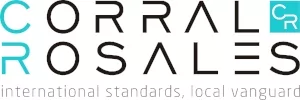The small amount is a public procurement procedure regulated in the Organic Law of the National Public Procurement System (hereinafter, the "LOSNCP"), the Regulation to the LOSCNP (hereinafter, the "Regulation"), and the Codification and Updating of Resolutions issued by the National Public Procurement Service (hereinafter, the "Codification").
Public entities1 can make direct contracts with suppliers through the small amount as long as they meet the following requirements:
- The object of the contract must be: (i) the acquisition of standardized goods or services2, which do not appear in the electronic catalog3; (ii) the acquisition of non-standard goods or services; or (iii) the contracting of works, solely and exclusively for the repair, remodeling, adaptation, maintenance or improvement of an existing construction or infrastructure. In no case can consulting services be hired4.
- In the year, the amount of the contract must not exceed the value that results from multiplying the coefficient 0.0000002 by the Initial State Budget for the corresponding fiscal year. In 2021, this value is $ 6,416.07.
Article 332 of the Codification provides that, during the year, the contracting entities may consolidate their needs and carry out a single contract for a small amount or carry out several such amounts for the same good or service, but the amount of the consolidated contract or the total amount of individual contracts may not exceed the maximum value indicated.
These contracts may or may not be part of the annual planning that public entities are obliged to carry out5. But, in any case, the "small amount" tool must be used within the COMPRAS PÚBLICAS Portal6 (www.compraspublicas.gob.ec) to publish: the needs of goods, works or services, the information of the public servant responsible for the hiring, the email in which they will receive the offers of the interested suppliers, and the maximum delivery time of said offers.
To participate in a contract for a small amount, suppliers do not need to be registered in the RUP7. Suppliers will be selected under the following criteria8:
- In standardized goods and services, the supplier that offers the lowest price must be chosen.
- In non-standard works or goods and services, the supplier that offers the best technical, financial, and legal conditions must be chosen, without the lowest price being the only selection parameter.
Once the contracting has been carried out, the contracting entities must publish its relevant information on the COMPRASPUBLICAS Portal. This information and that which, at any time, is required by9 the National Public Procurement Service (hereinafter, "SERCOP"), will serve for this body to identify if there are non-compliance with the requirements applicable to this figure or if it was used to circumvent10 other hiring procedures. If there are non-compliances, SERCOP will inform the competent control bodies so that they can initiate the corresponding actions.
There are special or exceptional cases11in relation to this type of contracting for a small amount, such as the acquisition of medicines.
The LOSCNP does not expressly foresee the acquisition of medicines for a small amount, however this is possible under numeral 2 of article 54.2. of the Law12, since medicines can be classified as standard goods.
The Regulation develops this figure as follows:
"Art. 85.4.- Application of small amounts.- In duly justified and exceptional cases, contracts for the acquisition of medicines and strategic goods, the amount of which is equal to or less than multiplying the coefficient 0.0000002 of the Initial State Budget, will be carried out for a very small amount , in accordance with the provisions issued by the SERCOP for this purpose, and provided that the good is not available in the virtual repertoire for direct purchases enabled in the PUBLIC SHOPPING Portal.
The acquisition of medicines by this procedure will be within the current National Basic Medications Table. "13 (highlighted out of text)
Although the Regulation uses the name "virtual repertoire" and not "electronic catalog" as happens in small amounts for other standardized goods, the fundamental requirement is the same: the good must not be available on the COMPRASPUBLICAS Portal for direct purchases. Additionally, the Regulation clarifies that only the medicines that appear in the current National Basic Medicines Table may be purchased.
Therefore, the small amount of medicines comes when the good: (i) is not available in the virtual repertoire enabled in the COMPRASPUBLICAS Portal (hereinafter, the "Directory"); (ii) is included in the current National Basic Medicine Chart; and (iii) the amount of the contract does not exceed the established limit.
Reforms14 to the Regulation and Codification provide that the contracting entities of the Integrated Public Health Network15 (hereinafter, "RPIS") have the obligation to contract storage and distribution and delivery or dispensing services of medicines, prior to their acquisition (hereinafter, the "Services").
So far, the Services have not been contracted by the RPIS. However, when this happens and the SERCOP communicates it16 on the COMPRASPUBLICAS Portal, Chapter II of Section III of Chapter II of Title VIII of the Codification will come into force. It contemplates specific regulations that all public entities must comply with to acquire medicines for a small amount. Among the new provisions, the following stand out:
- The circumstances are established for the small amount to
proceed, according to the contracting entity:
- For RPIS entities, it proceeds when the medicines are not available in the Directory. In this case, the contracting of the Services is not mandatory, so the cost of the delivery-receipt of the medicines must be included in the acquisition.
- For other public entities, it is appropriate if the medicine has not been contemplated in the annual planning or, if it has been included, it does not constitute a constant and recurring requirement during the year, that can be consolidated in a contract whose amount exceeds the maximum allowed.
- The contracting entities, through electronic means, may invite various suppliers, whether natural or legal persons, national or foreign, as well as their associations or consortiums. In the invitation, the entities must include the technical specifications of the medicine and the delivery conditions.
- The entities must have at least three offers, prior to selecting the supplier. If this is not possible, the entity must justify that it carried out all the actions and requirements necessary for this purpose.
- Invited providers, who do not necessarily have to be registered in the RUP, must necessarily present the medicine's marketing authorization.
Until these regulations come into force, the provisions developed at the beginning of this article must be applied. Notwithstanding this, the SERCOP has established that, during this transition period, the contracting entities of the RPIS may carry out various small amounts of medicines in the year and their total amount may exceed the maximum value, provided that". due to external factors, outside of the contracting entity duly justified, the contracting cannot be consolidated to use a contracting procedure under a common or special regime, other than the Small Amount. "17.
Additionally, as of August 10, 2021, according to the fifth18 and tenth19 reformed provisions of the Organic Law Reform of the Organic Criminal Code on Anti-Corruption, all public entities must obtain a prior report of relevance and favorability from the State Comptroller General to celebrate the small amount and any other contract under the LOSCNP.
In conclusion, the acquisition of medicines for a small amount is exceptional and is subject to specific requirements. However, the dispersion of the applicable norms and their constant reforms generate confusion and an inappropriate use of this figure. For this reason, suppliers must be duly informed to avoid risks in the conclusion or execution of contracts, as well as in subsequent controls by the competent bodies.
Footnotes
1 When speaking of "public entities", reference will be made to those provided for in article 1 of the LOSCNP.
2 According to Article 42 of the Regulation, standardized goods and services are "... those whose characteristics or technical specifications... are homogeneous and comparable under equal conditions".
3 In accordance with numeral 3 of article 6 of the LOSNCP, the electronic catalog is the registry of standardized goods and services published on the COMPRASPUBLICAS Portal for direct contracting.
4 Codification and Updating of Resolutions issued by the National Public Procurement Service, Official Registry 245, January 29, 2018, Art. 330, no. 4.
5 Organic Law of the National Public Procurement System, Official Registry 395, August 4, 2008, Art. 22.
6 The COMPRASPUBLICAS Portal is the Official Computer System of Public Procurement of the Ecuadorian State, as provided in numeral 25 of article 6 of the LOSCNP.
7 Numeral 29 of article 6 of the LOSCNP, defines the Unique Registry of Suppliers or RUP as "... the Database of the suppliers of works, goods and services, including consulting services, authorized to participate in the procedures established in this Law . "
8 Codification and Updating of the Resolutions issued by the National Public Procurement Service, Official Registry 245, January 29, 2018, Art. 336.
9 Regulation to the Organic Law of the National Public Procurement System, Official Registry 588, May 12, 2009, Art. 60.
10 Numeral 2 of article 330 of the Codification provides that "Contracts for Small Amounts must not be used as a means of circumventing pre-contractual procedures.".
11 For example: leasing of goods, acquisition of fuels in operations of the entity, purchase of air tickets, contracting of travel agencies, acquisition of spare parts or accessories, among others.
12 "Art. 52.1.-Contracts of a small amount.- It may be contracted under this system in any of the following cases: [...] 2.-Contracts for the acquisition of goods or provision of standardized services, except consulting, which do not appear in the electronic catalog and whose amount is less than multiplying the coefficient 0.0000002 of the initial budget of the State of the corresponding fiscal year... "
13 Regulation to the Organic Law of the National Public Procurement System, Official Registry 588, May 12, 2009, Art. 85.4.
14 In this regard, Executive Decree No. 1033, published in Official Registry No. 208 of May 21, 2020, Section II of Chapter VII of Title III of the Regulations was amended; Resolution No. RE-SERCOP-2020-0111, published in the Official Registry Special Edition No. 1078 of September 28, 2020; and Resolution No. RE-SERCOP-2021-0114 published in Official Registry No. 432 of April 15, 2021.
15 "... Made up of the set of public institutions that provide health services and which are known as << health subsystems >>, made up of the MSP, the IESS, the Social Security Institute of the National Police (ISSPOL) , ISSFA and the Complementary Health Network ". Ecuador Constitutional Court of Ecuador, "Sentence No.: 679-18-JP / 20 and accumulated", in Judgment No.: 679-18-JP and accumulated, August 5, 2020, 17.
16 Codification and Updating of the Resolutions issued by the National Public Procurement Service, Official Registry 245, January 29, 2018, Twenty-fifth Transitory Provision.
17 Codification and Updating of Resolutions issued by the National Public Procurement Service, Official Registry 245, January 29, 2018, Twenty-eighth Transitory Provision, no. 3.
18 ". In the event of determining the relevance and favorability . the rest of the procedure established for this purpose in the law may be continued on a regular basis ."
19 ". The Office of the Comptroller General of the State will issue a report of relevance, as a prerequisite for the signing of the public procurement processes determined in the law on the matter, by public sector entities and agencies ."
The content of this article is intended to provide a general guide to the subject matter. Specialist advice should be sought about your specific circumstances.

